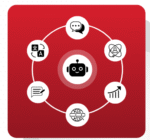Hamel Husain and Shreya Shankar – AI Evals For Engineers & PMs
$3,500.00 Original price was: $3,500.00.$149.00Current price is: $149.00.
Introduction
In today’s rapidly evolving AI landscape, evaluation frameworks are becoming just as important as model training itself. The rise of generative AI has shifted the focus from simply building large models to understanding their performance, safety, and reliability in real-world use cases. Among the leading voices in this domain are Hamel Husain and Shreya Shankar, who introduced the groundbreaking resource AI Evals For Engineers & PMs. This framework is designed to help engineers, data scientists, and product managers bridge the critical gap between model development and practical deployment.
This guide explores their contributions, why AI evaluation matters, how their methodology works, and what it means for the future of applied AI.
Who are Hamel Husain and Shreya Shankar?
Hamel Husain is a well-known machine learning engineer with experience at companies like GitHub and Airbnb. He has been at the forefront of applied AI, focusing on developer tools, MLOps, and the practical integration of AI models into production systems.
Shreya Shankar is a researcher and practitioner who has worked extensively on ML evaluation, interpretability, and building robust AI systems. Her expertise lies in understanding the intersection of research and industry deployment.
Together, they created AI Evals For Engineers & PMs, a practical guide and framework aimed at professionals who need to measure, validate, and communicate AI model effectiveness.
Why Evaluation Matters in AI
When deploying machine learning systems, one of the biggest challenges is not just achieving high accuracy in benchmarks, but ensuring the model is:
Safe and reliable in production.
Aligned with user expectations and business goals.
Transparent in terms of performance trade-offs.
Adaptable to changing data distributions.
Traditional evaluation metrics like accuracy, precision, and recall often fall short in capturing real-world failure cases. For engineers and PMs, this gap can create massive risks—ranging from poor customer experience to ethical concerns and regulatory violations.
That’s where AI Evals For Engineers & PMs by Hamel Husain and Shreya Shankar stands out.
Core Principles of AI Evals For Engineers & PMs
Human-Centered Evaluation
Instead of relying purely on automated scores, the framework emphasizes human-in-the-loop evaluations. This ensures that models are tested against subjective, nuanced expectations.Task-Specific Metrics
The evaluation process is customized depending on the end-user task—whether it’s natural language understanding, recommendation systems, or generative AI outputs.Iterative Testing
Models are continuously evaluated across versions, ensuring that improvements are quantifiable and traceable.Cross-Functional Collaboration
Engineers, PMs, designers, and domain experts can all collaborate using a shared evaluation language, making AI performance discussions more productive.
Benefits for Engineers
For engineers, AI Evals For Engineers & PMs provides:
Clear testing pipelines that reduce ambiguity in model validation.
Reproducible experiments that align with MLOps practices.
Debugging insights to identify where models fail in real-world conditions.
Faster iteration cycles due to structured evaluation protocols.
This results in more reliable deployments and reduced production incidents.
Benefits for Product Managers
For PMs, the framework empowers them to:
Communicate trade-offs between model performance and business outcomes.
Align AI goals with product strategy and user needs.
Prioritize features based on evaluation insights.
Build stakeholder trust through transparent reporting.
By using AI Evals For Engineers & PMs, PMs can confidently make data-driven decisions about AI features without needing deep technical expertise.
Key Takeaways from the Framework
1. Moving Beyond Accuracy
Accuracy alone doesn’t tell the full story. The guide encourages teams to focus on qualitative evaluations like diversity, fairness, and robustness.
2. Building Evaluation Datasets
Custom evaluation datasets tailored to specific product use cases provide more actionable insights than generic benchmarks.
3. Automating Reproducibility
By integrating evaluation pipelines into CI/CD systems, teams can ensure that performance regression is caught early.
4. Standardized Reporting
Evaluation reports designed for both technical and non-technical audiences help bridge communication gaps.
Real-World Applications
Conversational AI Systems – Evaluating not just grammar correctness, but also empathy, tone, and contextual accuracy.
Recommendation Engines – Measuring whether recommendations align with user intent and satisfaction rather than just click-through rates.
AI-Powered Search – Ensuring fairness, diversity, and ranking reliability in retrieval tasks.
Enterprise AI Tools – Evaluating robustness under domain-specific data shifts.
In each of these areas, AI Evals For Engineers & PMs offers a playbook for reliable deployment.
Comparison with Traditional Approaches
Traditional AI evaluation often relies on benchmark datasets like ImageNet or GLUE. While useful, these do not reflect real product contexts.
Hamel Husain and Shreya Shankar’s approach stands apart by:
Focusing on production-level evaluation rather than academic benchmarks.
Enabling cross-functional collaboration instead of siloed technical analysis.
Promoting human judgment where automated metrics fall short.
The Future of AI Evaluation
As generative AI and LLMs continue to dominate, evaluation will become the backbone of AI governance. Frameworks like AI Evals For Engineers & PMs are likely to evolve into:
Standardized toolkits for industry-wide adoption.
Regulatory compliance frameworks that satisfy government and ethical guidelines.
Continuous monitoring systems that adapt to dynamic user behavior.
In this context, the work of Hamel Husain and Shreya Shankar is pioneering and will likely serve as a reference point for years to come.
Practical Tips for Teams Adopting AI Evals
Start Small – Begin with evaluating the most critical user-facing tasks.
Involve Stakeholders Early – Bring PMs, engineers, and end-users into the evaluation loop.
Document Everything – Track evaluation datasets, metrics, and failure cases for transparency.
Automate Where Possible – Integrate evaluations into CI/CD pipelines to catch regressions early.
Iterate Continuously – Treat evaluation as an ongoing process, not a one-time event.
Conclusion
The introduction of AI Evals For Engineers & PMs by Hamel Husain and Shreya Shankar represents a major step forward in making AI systems more reliable, transparent, and aligned with real-world needs. By prioritizing human-centered evaluation, cross-functional collaboration, and iterative improvement, their framework empowers both engineers and product managers to deliver AI systems that not only perform well but also build user trust.
As AI becomes embedded into every aspect of business and society, robust evaluation practices will define the difference between successful AI adoption and failed deployments. Thanks to the work of Hamel Husain and Shreya Shankar, the path forward is clearer than ever.









